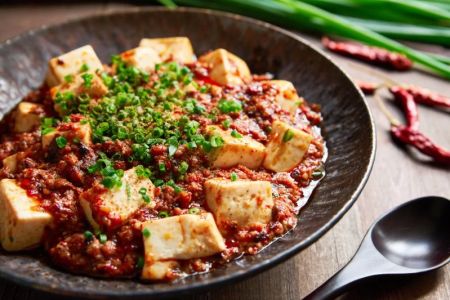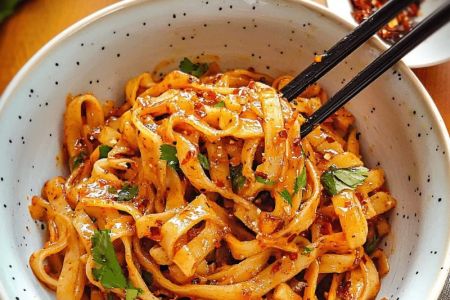- traditional-chinese-new-year-dishes-in-america
- cultural-significance-of-new-year-foods
- popular-dishes-and-their-meanings
- challenges-and-adaptations-in-america
- where-to-find-authentic-chinese-new-year-foods-in-america
1. Traditional Chinese New Year Dishes in America
The celebration of Chinese New Year in America has blossomed into a rich cultural tradition that combines ancestral customs with the unique local environment. Traditional Chinese New Year dishes in America remain an essential way families honor their heritage and usher in luck and prosperity for the coming year. These dishes are more than just meals; they carry symbolism, stories, and hopes passed down through generations.
Many Chinese-American families meticulously prepare recipes that are rooted in symbolism — from longevity noodles to whole fish — each dish imbued with wishes for health, wealth, and happiness. What is particularly fascinating is how these dishes have adapted over time to incorporate local American ingredients while maintaining their traditional essence. This blend offers a rich culinary experience that both respects and reinterprets ancient customs.
The Role of Food in Chinese New Year Celebrations
Food is at the heart of the Chinese New Year celebration. Beyond sustenance, it functions as a medium for family unity and cultural identity. Gathering around the table for these traditional dishes symbolizes reunion and reinforces family bonds. In America, this tradition is often a cherished occasion for multigenerational families to connect and share their heritage.
2. Cultural Significance of New Year Foods
Each dish served during the Lunar New Year carries specific meanings, many of which hinge on wordplay and symbolism in Chinese language and culture. For example, fish (鱼 yú) represents surplus and prosperity because it sounds like "abundance." Dumplings (饺子 jiǎozi) are shaped like ancient Chinese money and symbolize wealth. The choice and preparation of these foods are deliberate acts that reflect hopes for the year ahead.
Stories Behind Popular Dishes
One inspiring story comes from a Chinese immigrant family in San Francisco. Their tradition of serving a large fish at New Year’s Eve dinner is a direct homage to their ancestors who believed that not finishing the fish would mean lacking wealth in the new year. This respect for tradition fosters a deep sense of cultural continuity despite living far from the homeland.
3. Popular Dishes and Their Meanings
Among the array of traditional dishes, some stand out for their symbolic importance and widespread popularity across Chinese-American communities:
Longevity Noodles (长寿面)
These noodles are longer than usual and uncut to represent a wish for a long life. Their preparation can vary — from stir-fried to soup-based — but the message remains the same. In American Chinese households, these noodles are often served with vegetables and proteins available locally, like chicken or tofu.
Sticky Rice Cake (年糕)
Known as "nian gao," this dish symbolizes progress, growth, and the promise of a better year. The sticky texture represents cohesiveness and family unity. Chinese-American communities often adapt the recipe to include ingredients like coconut or sweet potato to suit local tastes.
Whole Fish (全鱼)
Serving a whole fish is a tradition that embodies the wish for surplus and prosperity. Typically steamed and garnished with ginger and scallions, the fish is carefully served whole to honor this symbolism. Many families in America source fresh fish from local Asian markets to keep the tradition vibrant and authentic.
4. Challenges and Adaptations in America
Recreating traditional Chinese New Year dishes in America comes with challenges, particularly when certain authentic ingredients are hard to find or expensive. Many families have creatively adapted recipes by substituting local ingredients while preserving the dish's cultural meaning. This flexibility has allowed traditions to thrive even in diverse, multicultural environments.
Case Study: The Evolution of Dumplings
Dumplings are a quintessential New Year food. In many American homes, fillings have evolved from pork and cabbage to include regional favorites like shrimp, kale, or even cheese, reflecting the blending of cultures. Cooking methods also vary — from boiling to pan-frying — demonstrating the innovative spirit of Chinese-American cooks while maintaining the dumpling's role as a symbol of wealth and togetherness.
Maintaining Tradition in a Fast-Paced Life
In busy urban environments, time constraints have led many to seek convenience without sacrificing tradition. Ready-made dumplings, pre-prepped ingredients, or dining out at authentic Chinese restaurants are common alternatives. Our website Chinese Food can help connect you with the best local services, shops, and products to ensure your Lunar New Year feast is both convenient and traditional.
5. Where to Find Authentic Chinese New Year Foods in America
Finding high-quality ingredients and traditional prepared foods is essential for celebrating Chinese New Year authentically. In major cities across America, Chinese grocery stores and specialty markets stock seasonal items such as rice cakes, fresh fish, and specific vegetables vital for traditional recipes.
Recommendations for Sourcing Ingredients and Ready-Made Dishes
For those who prefer convenience, Chinese Food is an excellent resource offering access to recommended vendors and stores that provide authentic products. Whether you seek hand-made dumplings, specialty sauces, or fresh produce, this platform supports your celebration by bridging tradition and modern lifestyle.
Community Events and Cultural Exchanges
Many Chinese communities in America host annual Lunar New Year food festivals, cooking classes, and cultural exhibitions. Participating in these events offers an immersive experience to learn and taste traditional dishes firsthand, enriching your understanding of their significance. Exploring such events can deepen appreciation and inspire your own holiday traditions.








